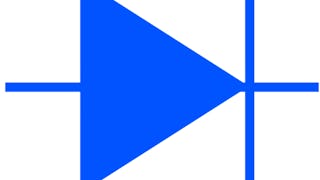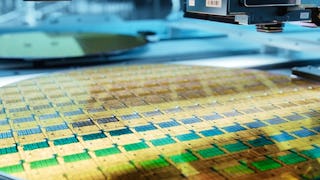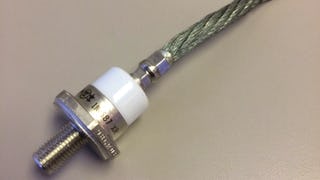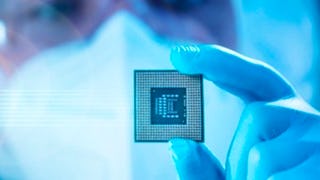Course 2 begins with the definitions of resistivity and sheet resistance of semiconductors and metals and emphasizes the importance of working with the correct units for each. We see how to calculate the sheet resistance of a thin conducting film once we know its resistivity. A method to determine the contact resistance using the transfer length method is described, along with the definition of the specific contact resistivity. Current-voltage (IV) measurements of p-n junction diodes are used to extract key device parameters such as the ideality factor and series resistance. The course project explores how process monitor blocks are used to maintain manufacturing integrity.

Gain next-level skills with Coursera Plus for $199 (regularly $399). Save now.

Electrical Characterization: Diodes
This course is part of Semiconductor Characterization Specialization

Instructor: Trevor Thornton
2,318 already enrolled
Included with
(26 reviews)
Recommended experience
What you'll learn
Define resistance, resistivity, and sheet resistance and their associated units.
Describe how to perform four-point probe current-voltage measurements.
Explain the use of the transfer length method.
Skills you'll gain
Details to know

Add to your LinkedIn profile
6 assignments
See how employees at top companies are mastering in-demand skills

Build your subject-matter expertise
- Learn new concepts from industry experts
- Gain a foundational understanding of a subject or tool
- Develop job-relevant skills with hands-on projects
- Earn a shareable career certificate

There are 6 modules in this course
Course 2 begins with the definitions of resistivity and sheet resistance of semiconductors and metals and emphasizes the importance of working with the correct units for each. We see how to calculate the sheet resistance of a thin conducting film once we know its resistivity. A method to determine the contact resistance using the transfer length method is described, along with the definition of the specific contact resistivity. Current-voltage (IV) measurements of p-n junction diodes are used to extract key device parameters such as the ideality factor and series resistance. The course project explores how process monitor blocks are used to maintain manufacturing integrity.
What's included
1 video2 readings
This week introduces the concepts of resistivity and sheet resistance.
What's included
3 videos1 assignment
This week, you will learn about measuring resistance with four-point probes.
What's included
2 videos1 reading1 assignment
This week, you will learn about measuring contact resistance using transfer length measurements.
What's included
2 videos1 reading1 assignment
This week, you will learn about the current-voltage (IV) characteristics of diodes.
What's included
1 video1 reading1 assignment
This week, you will complete a case study to assess your ability to determine what happened to a process monitor block to change its resistance.
What's included
1 video2 assignments
Earn a career certificate
Add this credential to your LinkedIn profile, resume, or CV. Share it on social media and in your performance review.
Instructor

Offered by
Explore more from Mechanical Engineering
 Status: Free Trial
Status: Free TrialUniversity of Colorado Boulder
 Status: Free Trial
Status: Free TrialArizona State University

University of Colorado Boulder
 Status: Free Trial
Status: Free TrialArizona State University
Why people choose Coursera for their career




Frequently asked questions
To access the course materials, assignments and to earn a Certificate, you will need to purchase the Certificate experience when you enroll in a course. You can try a Free Trial instead, or apply for Financial Aid. The course may offer 'Full Course, No Certificate' instead. This option lets you see all course materials, submit required assessments, and get a final grade. This also means that you will not be able to purchase a Certificate experience.
When you enroll in the course, you get access to all of the courses in the Specialization, and you earn a certificate when you complete the work. Your electronic Certificate will be added to your Accomplishments page - from there, you can print your Certificate or add it to your LinkedIn profile.
Yes. In select learning programs, you can apply for financial aid or a scholarship if you can’t afford the enrollment fee. If fin aid or scholarship is available for your learning program selection, you’ll find a link to apply on the description page.
More questions
Financial aid available,





